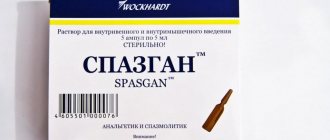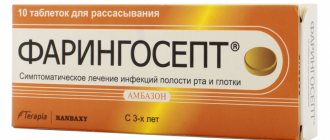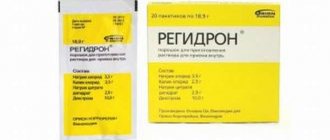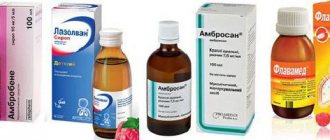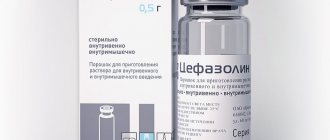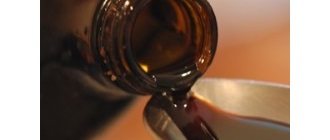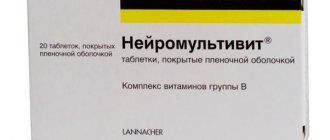17.08.2017
Last modified: October 31, 2021 at 02:09 pm
If you have hypertension, you need to be careful when taking medications that can affect the functioning of the heart and circulatory system. Understanding how the popular Spazgan increases or decreases blood pressure will make it possible to react correctly in time to changes in well-being if you take it. If there is an urgent need to use the drug for acute renal colic or spasms of the intestinal tract, then you need to be prepared in advance for possible changes in blood pressure.
Spazgan has proven itself well as an analgesic that quickly relieves pain caused by spasms of smooth muscle tissue. It is prescribed for various diseases, so it can often be found in the home medicine cabinet. The drug is combined from several active ingredients and, due to their combination, can simultaneously have the following effects:
- analgesic;
- pain reliever;
- antispasmodic;
- antipyretic;
- weak anti-inflammatory.
It has a relaxing effect on the smooth muscle layer of cells of internal organs, which relieves pain that can be caused by kidney, bile, intestinal or stomach spasms. But for the same reason, the drug is prescribed with caution to people prone to arterial hypotension (low blood pressure).
Instructions
The instructions contain information about indications, method of administration, drug interactions, contraindications, side effects, as well as overdose. You should definitely familiarize yourself with it, otherwise unpleasant consequences simply cannot be avoided.
Indications
Indications for taking this drug include the following conditions:
- Painful sensations in the abdomen;
- Increased flatulence;
- Regular constipation or diarrhea.
In addition, the drug is actively prescribed for arthralgia, sciatica, myalgia, dysmenorrhea, dyskinesia, headache, and algodismenorrhea.
Method of administration
The maximum allowed period of time for taking this medication without consulting a doctor is 5 days. If the patient’s condition has not improved during this period of time, then he should immediately contact the hospital for further consultation.
Tablets should be taken 1 piece after meals 1-2 times a day. The interval between doses should be 10-12 hours. Treatment can be continued for 5 days. If necessary, only a doctor can increase the duration of treatment or the maximum permitted dosage.
The solution for injection is administered once, 2 or 4 ml. The maximum permissible dosage is 4 ml.
The solution cannot be mixed with any other substances.
The solution should be administered intravenously or intramuscularly at a rate of 1 ml per minute, while the patient should be in a horizontal position. When administering an injection, it is important to monitor respiratory rate, heart rate, and blood pressure. Before collection, the solution must be heated to a temperature of 37°C.
Only a doctor should administer injections to children. The dosage is determined based on the patient’s age:
- 1-2 years old - 0.2 ml of solution can be administered. The drug is administered intramuscularly or intravenously;
- 3-4 years old - 0.3-0.4 ml of medication can be administered. The drug is administered only intramuscularly;
- 5-7 years - 0.4-0.5 ml can be administered. The drug must be administered intramuscularly only;
- 8-12 years old - 0.6-0.7 ml of the product is administered. Only intramuscular administration of the drug is allowed;
- 12-15 years old - 0.6-1 ml of the drug is administered. Only intramuscular administration of the drug Spazgan is allowed.
Release form
This drug is available in the form:
Tablets. They are white in color;- Solution for injection. It is a clear liquid that has a yellowish tint.
1 tablet contains metamizole sodium, pitofenone hydrochloride, and fenpiverinium bromide.
1 ampoule contains metamizole sodium, fenpiverinium bromide, and pitofenone hydrochloride.
Due to this combination of components, Spazgan has a strong effect on the patient’s body.
Interaction
Combined use with butyrophenones, antidepressants, quinidine, phenothiazines, and amantadine enhances the m-anticholinergic effect on the body.
Simultaneous use of the drug Spazgan with chlorpromazine can provoke the appearance of hyperthermia, and contraceptives and allopurinol increase the toxicity of the drug.
Spazgan is also not compatible with colloidal blood substitutes, penicillin, or other radiopaque agents.
Composition and principle of action
The doctor can prescribe the patient one of 2 dosage forms of Spazgan: tablets or ampoules. The latter are rarely purchased for independent use, since the injection is difficult to do at home. Due to the high concentration of active substances, ampoules are sold from pharmacies only by prescription. With tablets, the situation is much simpler: they are available over-the-counter and are sold in packages of 20 and 100 pieces. There are 3 main components:
- metamizole sodium (per 1 tablet – 500 mg);
- pitofenone hydrochloride (5 mg per tablet);
- fenpiverinium bromide (0.1 mg per tablet).
By volume, of course, the main substance is metamizole sodium, the safety of which has been questioned, as a result of which drugs based on it are prohibited for sale in most EU countries. It is an analgesic from the group of pyrizolone derivatives, works through inhibition of prostaglandin synthesis. To a lesser extent, it has an anti-inflammatory effect, as well as an antipyretic effect (lowers temperature).
Additional components serve the following purposes:
- Pitophenone hydrochloride is a myotropic substance that relaxes smooth muscles. According to the principle of action, it is similar to papaverine - the same M-anticholinergic, which reduces the secretion of the digestive glands and relieves intestinal peristalsis.
- Fenpiverinium bromide also belongs to the group of M-anticholinergics, and therefore also affects the smooth muscles of internal organs.
Thus, the pharmacological effect of the drug Spazgan is based primarily on eliminating (blocking) pain, as well as relieving spasms: all 3 main components are aimed at this. To a lesser extent, it has anti-inflammatory and antipyretic effects, since metamizole sodium is solely responsible for them.
Side effects
Sometimes side effects may occur while taking this medicine, which include:
- Oliguria, anuria, renal dysfunction, red staining of urine (does not affect test results in any way), as well as proteinuria;
- A sharp decrease in blood pressure, thrombocytopenia, leukopenia, cardiac arrhythmia, agranulocytosis, nephritis, bronchospasm, gastralgia;
- Dizziness and headache;
- Decreased sweating, urinary retention, dry mouth;
- Hives, skin irritation, rash or any other manifestations of allergies.
Overdose is indicated by symptoms of hypotension, drowsiness, convulsions, vomiting, nausea, as well as disturbances in the functioning of the kidneys and liver. For treatment, it is necessary to rinse the stomach and also take activated charcoal. Subsequently, symptomatic treatment is carried out.
Contraindications
The drug is not recommended for use in conditions such as:
- Allergy to certain substances that are part of the drug;
- Angina pectoris, as well as heart failure;
- Serious problems with the kidneys or liver;
- Prostatic hyperplasia;
- Megacolon, as well as intestinal obstruction;
- Individual lactose intolerance;
- Granulocytopenia.
Spazgan should be prescribed with caution to patients who have problems with the kidneys and liver. In addition, this drug should be taken under close medical supervision by persons who have a tendency to hypotension, as well as bronchospasm.
Pregnancy
If the girl is pregnant, then she should stop taking this medication . This is due to the fact that the drug has an effect on the fetus.
While breastfeeding, you should also avoid taking Spazgan. If it is not possible to replace it with a safe analogue, then the baby needs to start giving artificial nutrition.
Pharmacokinetics of the drug
Absorption of all active components of Spazgan occurs in the gastrointestinal tract, while the maximum concentration in the blood plasma for pitofenone can be observed after half an hour, for fenpiverinium bromide - after an hour, and for metamizole sodium - after 4 hours, but the effect of taking it is diagnosed after 20 minutes.
Metamizole sodium is passed on to the baby through breast milk, while pitofenone and fenpiverinium bromide do not pass through the BBB.
Metabolism of all 3 components occurs in the liver, and excretion is carried out by the kidneys. To a lesser extent (up to 3%), metabolites are excreted in bile.
Price
The cost of the drug Spazgan should be found in pharmacies in your city. The instructions provide an approximate cost.
Russia
- For the tablet form of the drug Spazgan you will have to pay 115-418 rubles;
- On average, you will have to pay 118 rubles for injections of the drug Spazgan.
Ukraine
In Kyiv pharmacies you will have to pay 86 - 218 UAH for the tablet form of the drug.
Video on the topic: Spazgan instructions
Effects on the cardiovascular system
Like other organs, blood vessels also have a layer of smooth muscle cells. The main property of the smooth muscles of the cardiovascular system is its ability to contract. Due to the rhythmic narrowing and expansion of the lumens of blood vessels, blood circulation occurs. The more relaxed the walls of blood vessels, the less effort the heart muscle needs to fill them with blood, and the lower the pressure. If the medicine relieves tension in the smooth muscle layer, then at the same time the walls of the blood arteries relax.
Therefore, hypotensive patients need to be especially careful with the use of such medications, as they can cause a drop in already low blood pressure. But for people who more often experience hypertension, the use of this drug will be more appropriate.
Attention! In a person who does not suffer from or is not prone to hypertension, an uncharacteristic increase in blood pressure can be triggered by painful internal spasms. In this case, taking Spazgan, in addition to its primary antispasmodic and analgesic effect, also has a hypotonic effect.
Some doctors recommend taking an antispasmodic in cases where a sudden jump in blood pressure occurs due to spasms, and there is no opportunity to obtain antihypertensive medications, and there is a high probability of a hypertensive crisis. That is, Spazgan can be used under pressure because of its relaxing effect on the walls of blood vessels. Such use of a substance is permissible in extreme cases, therefore, it is first necessary to assess the appropriateness of the action, find out the diseases characteristic of humans, and compare their presence with the list of contraindications in the instructions.
Important information: Blood pressure medicine Vamloset: instructions for use, reviews
Reviews
Reviews about this medicine are usually positive. In them, patients note the high effectiveness of the drug, as well as a large number of analogues, which allows them to choose a safer drug if they suddenly have an allergic reaction.
There are not many negative reviews ; in them people complain about side effects, which caused discomfort to some.
Analogues or replacement options
In case of an undesirable hypotonic effect, the drug must be discontinued and replaced with another analgesic. People prone to hypotension are recommended to take cofalgin as a replacement. It also has a similar analgesic and antipyretic ability, but on the contrary, it is not prescribed for those with a predisposition to hypertension due to the presence of caffeine in its composition.
For those who have high blood pressure, on the contrary, the use of Spazgan is recommended. A similar combination of active ingredients included in its composition is also found under other trade names - Spazmalgon, Spazmalgin, Revalgin. But if the body has already shown a positive reaction to a proven medicine, then in order to avoid new risks, it is not worth replacing it.
Drug interactions
With simultaneous use of Spazgan:
- non-narcotic analgesics - can cause mutual enhancement of toxic effects;
- allopurinol, tricyclic antidepressants, oral contraceptives - increase the toxicity of metamizole sodium, disrupting its metabolism in the liver;
- barbiturates, inducers of microsomal liver enzymes (phenylbutazone) - reduce the effect of metamizole sodium;
- cyclosporine - reduces its concentration level in the blood;
- tranquilizers, sedatives - enhance the effect of metamizole sodium;
- H1-histamine blockers, butyrophenones, phenothiazines, quinidine, amantadine - can enhance the M-anticholinergic effect;
- ethanol – promotes the development of mutually reinforcing effects;
- chlorpromazine and other phenothiazine derivatives – can cause the development of severe hyperthermia;
- glucocorticosteroids, oral hypoglycemic agents, indomethacin, indirect anticoagulants are displaced by metamizole sodium from association with plasma proteins and can increase the severity of their action;
- cytostatics, thiamazole – increase the likelihood of developing leukopenia;
- codeine, propranolol, H2-histamine blockers - slow down the process of inactivation of metamizole sodium and enhance the effect of the drug.
The combination of Spazgan with radiocontrast agents and colloidal blood substitutes is contraindicated.
Spazgan from pressure
The pharmaceutical drug "Spazgan" can be used for high blood pressure due to its ability to relax the walls of blood vessels. However, blood pressure surges are not a direct indication for the use of the drug. The main purpose of Spazgan is to relieve pain caused by spasms of smooth muscle tissue. Therefore, the appropriateness and safety of an anesthetic for high or low blood pressure should be determined solely by a doctor.
Indications
Taking Spazgan is important for moderate pain caused by renal and hepatic colic. With the help of an analgesic/antispasmodic it will be possible to relieve spastic pain in the intestines. And also minimize pain in women during menstruation. Spazgan is often prescribed for the symptomatic treatment of joint pain, myalgia and neuralgia. Medicines are used as an adjuvant after surgery to eliminate postoperative pain. An effective pharmaceutical drug can be used to reduce temperature in acute respiratory infections and various infectious and inflammatory diseases.
special instructions
The use of the solution is contraindicated for acute abdominal pain of unknown etiology.
Parenterally, the drug is recommended for emergency use in cases of renal or hepatic colic and in cases where absorption from the gastrointestinal tract is impaired or oral administration is impossible.
When treating patients prone to arterial hypotension (systolic pressure below 100 mmHg), with impaired liver or kidney function, individual hypersensitivity to non-steroidal anti-inflammatory drugs or non-narcotic analgesics, care should be taken and medical supervision should be provided.
Due to the risk of a significant decrease in blood pressure when administering 2 ml of a solution or more, the intravenous injection should be performed in a supine position, monitoring blood pressure, heart rate and respiration.
If the drug is used for more than seven days, monitoring of the functional state of the liver and peripheral blood picture (including the content of leukocytes) is required.
If there is an unmotivated increase in temperature, chills, sore throat, difficulty swallowing, stomatitis, the development of proctitis or vaginitis and the appearance of other symptoms of side effects, you should stop taking the drug and consult a doctor.
While using Spazgan, you should not drink alcohol or take ethanol-containing drugs.
Patients with complete or incomplete combination of bronchial asthma, recurrent nasal polyposis and paranasal sinuses should take the drug with caution.
With strict adherence to therapeutic doses, as a rule, the drug does not cause adverse effects in the patient.
During the treatment period, it is recommended to refrain from driving vehicles and machinery.
